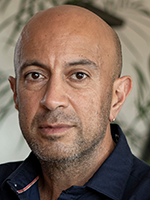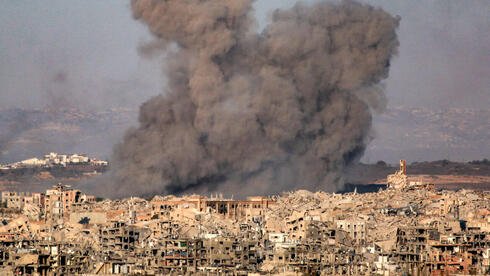Just last week, Israeli media described a “dramatic” development: the IDF had paved a new road cutting through Khan Younis, dubbed Magen Oz, or “Mighty Shield.” This new route, which connects to the historical Morag corridor, is meant to help defeat Hamas’ Khan Younis Brigade — a force that Israeli officials say had already been neutralized, with most of its commanders eliminated. By the next day, reports indicated that hundreds of buildings were being demolished along the corridor to secure it.
This, in essence, is the nature of the current ground war. While more tunnels are uncovered and additional militants are killed, the campaign appears to lack a clearly defined goal. In many cases, there is no enemy in sight — no nearby population, no armed resistance. It is primarily massive destruction of property, unlikely to dislodge Hamas and increasingly reminiscent of retribution.
The demolitions appear to have become an end in themselves, with no articulated strategy — unless the purpose is to prevent the return of Palestinian civilians to these areas.
Supporters of Prime Minister Benjamin Netanyahu continue to push the idea that Israel is on the verge of “total victory” — for the umpteenth time. Another Gaza neighborhood destroyed, another city bombed, another senior Hamas figure eliminated. These operatives’ names are largely unknown to the Israeli public and possibly even to Hamas’ leadership abroad.
Meanwhile, IDF soldiers continue to be killed. Others, traumatized by what they have seen and experienced, are taking their own lives. Increasingly, Israelis are asking: What is the goal? Why does this government refuse to pursue a comprehensive hostage deal?
More parents with children serving in Gaza are voicing disbelief that their sons and daughters are once again being sent into the Strip — for another round of combat, without a clear objective beyond flattening homes and neighborhoods.
Does anyone seriously believe that Hamas leaders will emerge from their tunnels waving white flags? Hamas will not surrender. It is willing to sacrifice more neighborhoods, more cities, more civilians. A new humanitarian zone in Rafah? More destruction in Gaza City? For Hamas, this only strengthens its global narrative and deepens international resentment toward Israel.
If Israel were to expand its campaign to systematically destroy neighborhoods in Gaza City — something it has so far largely avoided — it would likely serve Hamas’ long-term interests. More despair in Gaza fuels recruitment, not defeat. On the ruins of Gaza, Hamas is already laying the foundation for its next generation.
If Israel hopes to end this war one day, it must seek a diplomatic arrangement involving Arab states and the Palestinian Authority — one that removes Hamas from power in Gaza and dismantles its military capabilities. Such a resolution is achievable if Israel decides to pursue it. But it remains unclear whether this government has any interest in doing so.
What is the alternative? When the Netanyahu government treated Hamas as a manageable asset and allowed it to entrench itself, it paved the way for the Oct. 7 massacre. And now? Cease the war, and Hamas begins preparing the next Oct. 7.
 Photo: Yuval Chen
Photo: Yuval ChenThat’s why the government should have had a plan for the day after. From the outset of the war, many urged the prime minister to prepare an alternative to Hamas rule in Gaza. But the coalition was too focused on pushing judicial overhaul legislation and expanding military draft exemptions.
While Israel’s soldiers are fighting, being wounded, and dying — or taking their own lives — the government has been preoccupied with maneuvering to avoid early elections and maintain power.
Eventually, even Netanyahu’s government will have to change course. The Israeli public — those who serve, who pay taxes, who are loyal to the country rather than to its leader — will not tolerate an endless war.




